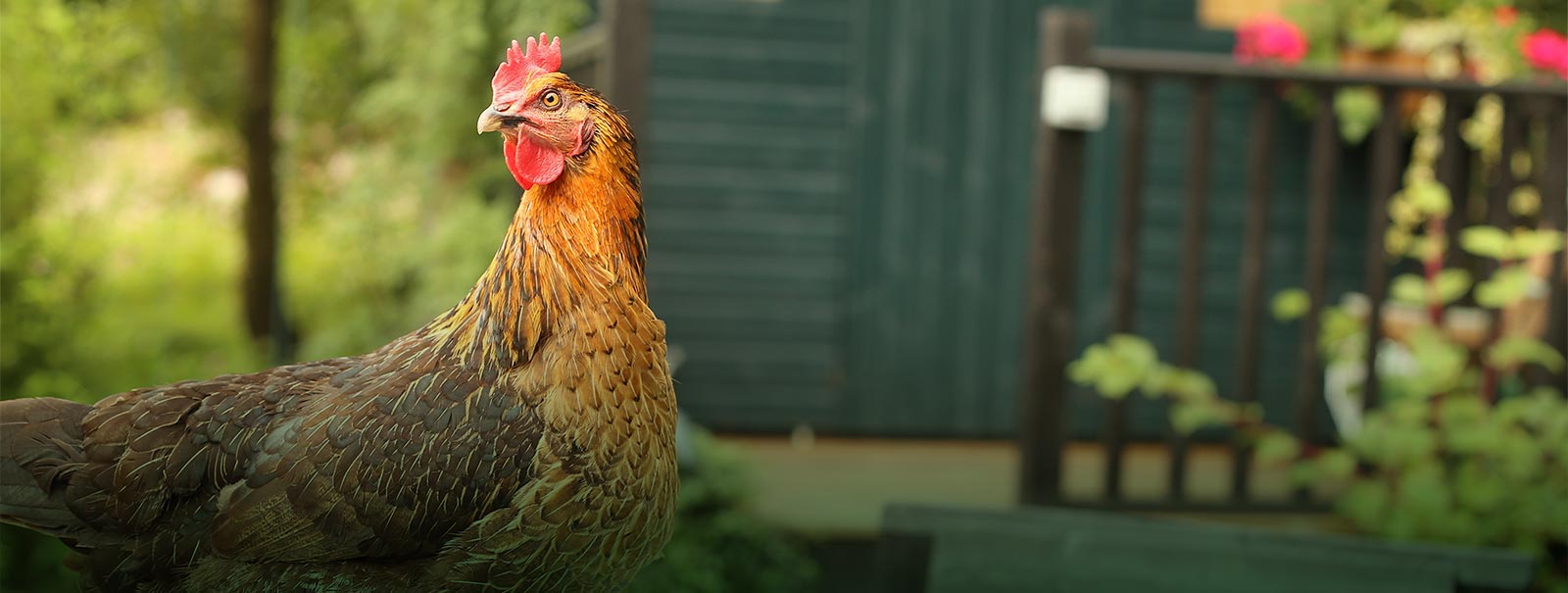
The advice hub Mareks Disease
Marek’s disease is one of the most common diseases we see in a small multi-age unvaccinated flocks. The disease presents typically between 12 and 20 weeks of age and it is usually fatal. The control of the disease is difficult so you need a good understanding of the basic principles in order to reduce the chance of your birds becoming infected.
Cause
Marek’s is caused by a Herpes virus which survives for over 12 months in the environment therefore making it challenging to control.
The virus infects chicks and young birds from as early as 1 day old. It initially circulates in the blood stream causing no clear symptoms. Within 7 days, the virus will have infected the white blood cells causing the death of the B Lymphocytes. These white blood cells produce antibodies and are essential for a fully working immune system, without them the bird can’t fight disease and is therefore unprotected.
Antibodies are proteins that are specific for individual pathogens such as bacteria and viruses. The antibody attaches to the pathogen and it is this attachment which stimulates other immune cells in the body to recognise the pathogen as foreign material and to start a complicated process of destroying and removing it from the body. If the B lymphocytes are destroyed by the Marek’s virus within a bird or flock, it will have a compromised immune system if it survives. These birds will be more susceptible to other diseases such as respiratory disease and Coccidiosis. It is therefore common to have Marek’s and other diseases too.
At about the same time of the initial infection and when the B cells are destroyed, the virus will also infect the T cells. This type of cell is involved in controlling the bird’s response to infection and in a way moderates the effects on the immune system. It is also involved in the control of viral infections. The T cell is not killed by the Marek’s virus, but is modified in a way which will eventually kill the bird. The infected T cells stay dormant and when the bird is around 10 weeks post-infection they start to multiply. These cells then form tumours in various organs including liver, kidney and spleen. The bird slowly loses weight but outwardly appears normal, until at some stage it will become incapacitated and is normally presented to the vet as a sudden problem, which obviously is not the case.
Another more classic form of the disease is the infection of the cells making up the nerve sheath which is similar to the outside coating of an electrical wire. These cells multiply due to infection from the virus and lose their efficacy, resulting in nerve failure and paralysis in the bird. This is commonly the sciatic nerve supplying the legs and leads to a bird with a classic one legged paralysis.
Feather follicles, another cell type in the skin can also become infected. This will cause small tumours in the feather follicles. Unfortunately, this feather follicle infection leads to the virus being present in feather dust which infects more birds as it can survive in the environment for over a year.
Marek’s virus has been around a long time and continues to evolve; now becoming more resistant to the effects of vaccines. Due to this evolution, it is therefore more virulent. It is common to see older infected birds which have been vaccinated previously; also the classic paralysed bird is a lot less common. At Chicken Vet, we frequently see thin, weak, young adult birds with severe weight loss; it can be very traumatic for the owner to be told that their new bird is already dying and has an extremely poor prognosis.
Treatment, Diagnosis and Prevention
If a bird has Marek’s there is no treatment and infected birds will eventually die. Marek’s can not be diagnosed through blood samples, only by post mortem examinations which may need tissue samples taking to confirm the diagnosis.
Prevention is by having a closed flock or by vaccinating if you are a breeder alongside strict hygiene and biosecurity. Don’t buy birds from unknown sources, if possible only buy vaccinated birds. Mature birds may possibly be a carrier of Marek’s disease but are far less likely to go down with it as they have survived thus far. Discuss vaccination with your vet it is not a particularly expensive vaccination but it does need administering by injection so understanding how to do this is essential for it to work. Pack size will be 1000’s and once made up it needs using within 2 hours and the unused vaccine is discarded.
If chicks are vaccinated at day old, they can still be infected if the levels of Marek’s in the environment is high particularly if the chicks are under a lot of stress pressure. Keeping strict hygiene practices along with keeping adult birds away from chicks until they have had chance to develop an immunity is detrimental to the vaccine getting chance to work.
Use hand sanitiser between batches of birds, always go to tend chicks first then older birds, keep chicks and young birds away from adult birds for as long as possible. Use a suitable disinfectant which kills viruses such as Chicken Vet Poultry Disinfectant or Interkokask.



